True black flowers are relatively rare and hard to find in nature. The pigments that produce black coloration in plants are not as common as other colors, like yellow or red. Nevertheless, despite their lack of color, black flowers are gorgeous in their own right. Their presence adds a unique touch of macabre beauty and inspires serious Morticia vibes. If you’re interested in growing black flowers in your garden, there are a few things to keep in mind.
First of all, it’s important to choose varieties that will do well in your climate. Black roses, for example, require full sun and well-drained soil to thrive. Additionally, you’ll want to ensure you provide plenty of water and fertilizer throughout the growing season, especially during periods of extended heat or drought, as this will help your plants stay healthy and vigorous.
Let’s look at some common black flowers you can grow yourself!
1. The Queen of Night Tulip (Tulipa ‘Queen of Night’)
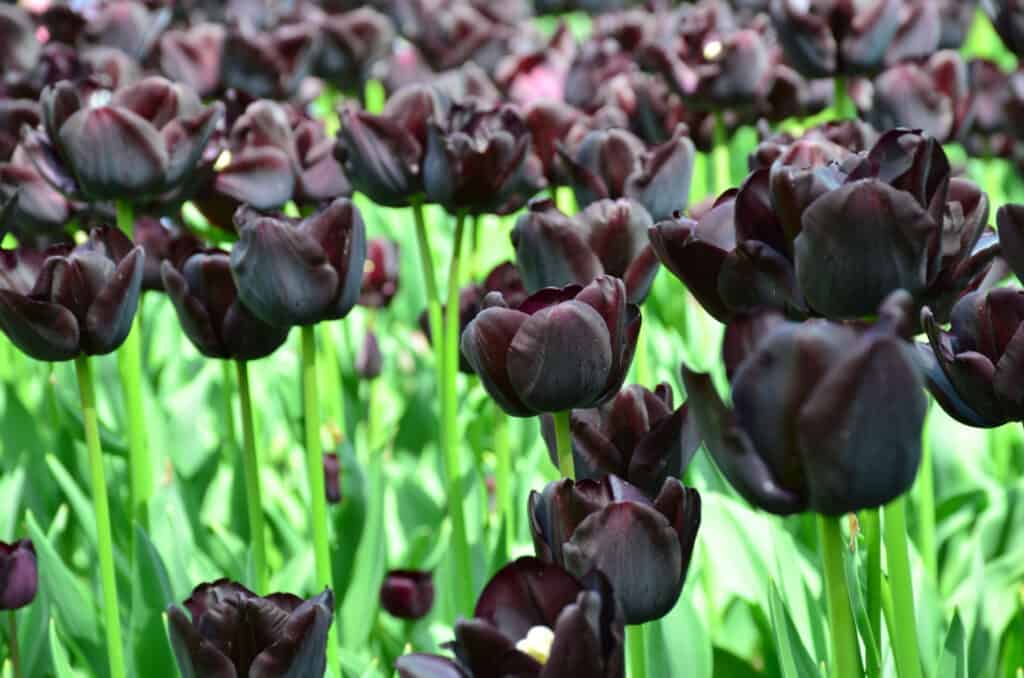
These large flowers are the darkest tulips, with a deep, rich, black, maroon color.
©rob3rt82/Shutterstock.com
The queen of night tulip grows in various climates and is known as one of the darkest tulips ever created. These large flowers have a deep, rich, black-maroon color.
Queen of night tulips typically bloom in the springtime and do best in cool, moist climates. When planting these tulips, choose a spot that gets full sun during the day but has some protection from wind.
These dark flowers also prefer well-drained soil. So, when caring for queen of night tulips, it is necessary to water them regularly and fertilize them every few weeks. It is also important to deadhead the flowers regularly to encourage continuous blooming. Doing so allows the plant to focus more energy on creating new blooms.
After the plants have died back in the fall, be sure to dig up the bulbs and store them indoors over winter. Queen of night tulips are trendy among gardeners and floral designers because of their unique dark appearance and ability to stand out next to lighter-colored plants and flowers.
2. The Onyx Odyssey Hellebore Flower (Helleborus ‘Onyx Odyssey’)
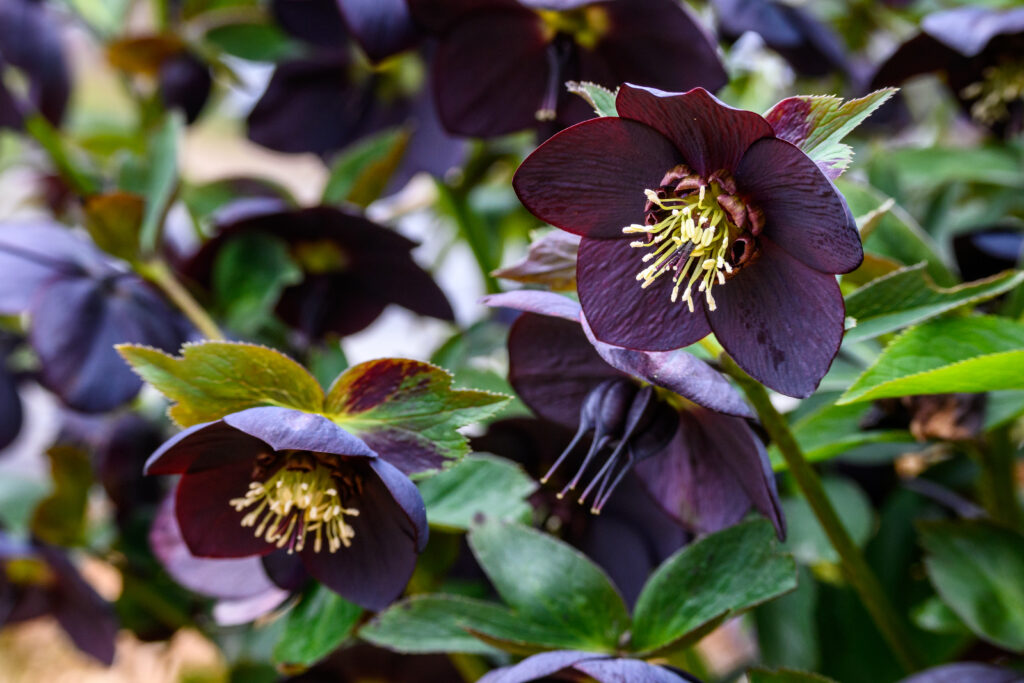
The black hellebore is a very dark flower.
©knelson20/Shutterstock.com
The onyx odyssey hellebore flower is also known as the black hellebore. The flowers of this plant are attention-grabbing, with their deep black-purple petals and greenish centers blooming into early spring. They grow best in shady areas with moist soil and are easy to take care of, making them an excellent choice for beginner gardeners! These resilient plants can survive cold winter conditions, high heat, and even humidity!
What’s interesting about these flowers is that they’re one of the few plants that thrive in the shade and even do pretty well as an indoor plant. Most other plants need at least some direct sunlight to grow, but the onyx odyssey hellebore does quite fine without it. It’s also important to note that the stems and leaves may be poisonous, so it’s best to wear gloves when gardening this flower.
3. The Molly Sanderson Viola Flower (Viola ‘Molly Sanderson’)
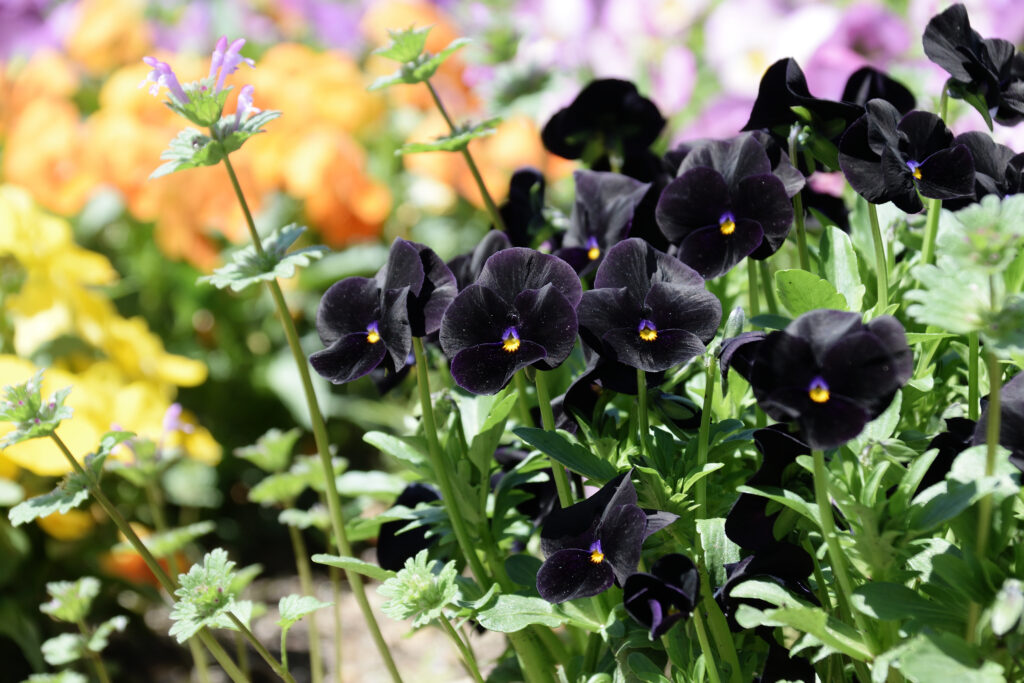
The Molly Sanderson viola is a trendy garden choice because of its silky black petals.
©Ken Kojima/Shutterstock.com
This excellent dark flower is native to North America. The flowers of this plant are a shade of deep black-purple and have a sweet fragrance reminiscent of violets. They bloom in the springtime, and they prefer cooler climates.
The Molly Sanderson viola is a trendy garden choice because of its silky black petals. It contrasts well with brighter plants and has a pleasant scent.
They are relatively easy to care for if you keep them in an area that receives partial shade and has well-drained soil. Be sure to look for pests such as mites, slugs, and snails that may damage this plant. With just a little bit of TLC, these flowers will thrive and provide you with enjoyment for many years.
4. The Zantedeschia Black Star Flower (Zantedeschia ‘Black Star’)

They essentially resemble black calla lilies.
©Rutsada wongraj/Shutterstock.com
The petals of zantedeschia black star are a rich shade of deep purple, verging on black. These stately blooms can be found in various gardens worldwide and often thrive in warm climates. They were accidentally created by crossbreeding Dutch calla lilies and Zantedeschia ‘Schwarzwalder. They essentially resemble black calla lilies.
These flowers bloom in the summertime and late spring and are very low maintenance. Water them regularly and they will grow just fine independently. If you’re looking for a unique, easy-to-care-for flower for your garden, the zantedeschia black star is a great choice. It will certainly make a statement!
5. Silver Laced Primrose (Primula ‘Silver Lace Black’)
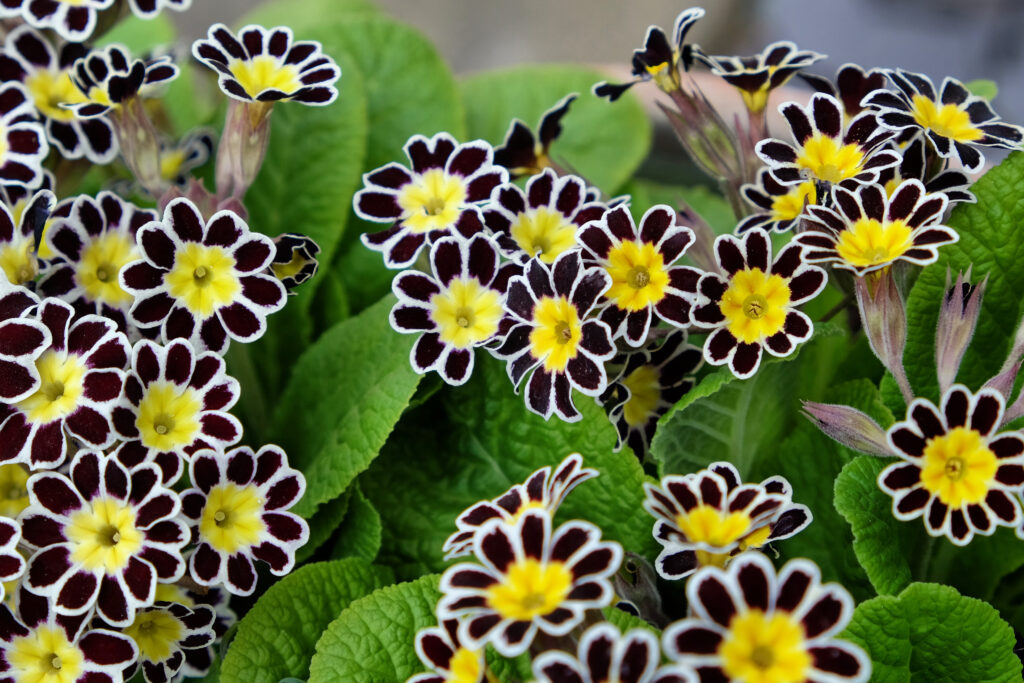
Their white edges blend into black, creating a silvery appearance.
©Alex Manders/Shutterstock.com
The silver-laced primrose features delicate, lacy petals. The flowers are typically dark brown or black, with a trim of white around the edges and a golden center. Their white edges blend into black, creating a silvery appearance. Additionally, they have a lovely fragrance. These flowers bloom in the springtime, and they prefer cooler climates. It’s best to plant them in moist soil with protection from the harsh sun.
Unfortunately, this delicate flower is susceptible to pests. One of the most common pests that affect the silver-laced primrose is aphids. If you’re not familiar with these notorious garden enemies, aphids are small, pear-shaped insects that suck on plant juices. They can cause damage to the leaves and stems of the plant, and they can also transmit diseases. Another pest that can affect this flower is spider mites. Spider mites are tiny spiders that live on the underside of leaves. Like aphids, they suck out plant juices. They can cause yellowing or browning of leaves, and in severe cases, they can even kill the plant. If you spot aphids or spider mites on your silver-laced primrose, you can remove them by spraying them with water or using insecticidal soap.
Despite this, silver-laced primrose is generally an easy-to-grow plant, making them popular in gardens and flower bouquets.
6. Sweetunia Black Satin Flower (Petunia hybrida ‘Sweetunia Black Satin’)

If you want an elegant flower to add to your garden, the sweetunia black satin is a great option!
©venkatrao kankatala/Shutterstock.com
As its name suggests, the sweetunia black satin flower has a dark bloom with satin-like petals. They are native to tropical and subtropical regions and thrive in warm climates. They typically bloom in late spring to summer from May to August but can also bloom throughout the year if conditions are right. These flowers need full sun and well-drained soil to thrive. They are usually easy to care for, as they don’t require too much water to reach their potential.
They can also be successfully planted in hanging baskets and garden beds. If you want an elegant flower to add to your garden, the sweetunia black satin is a great option! These black flowers will stand out in your garden.
7. The Pansy Black Beauty Flower (Pansy ‘Black Beauty’)
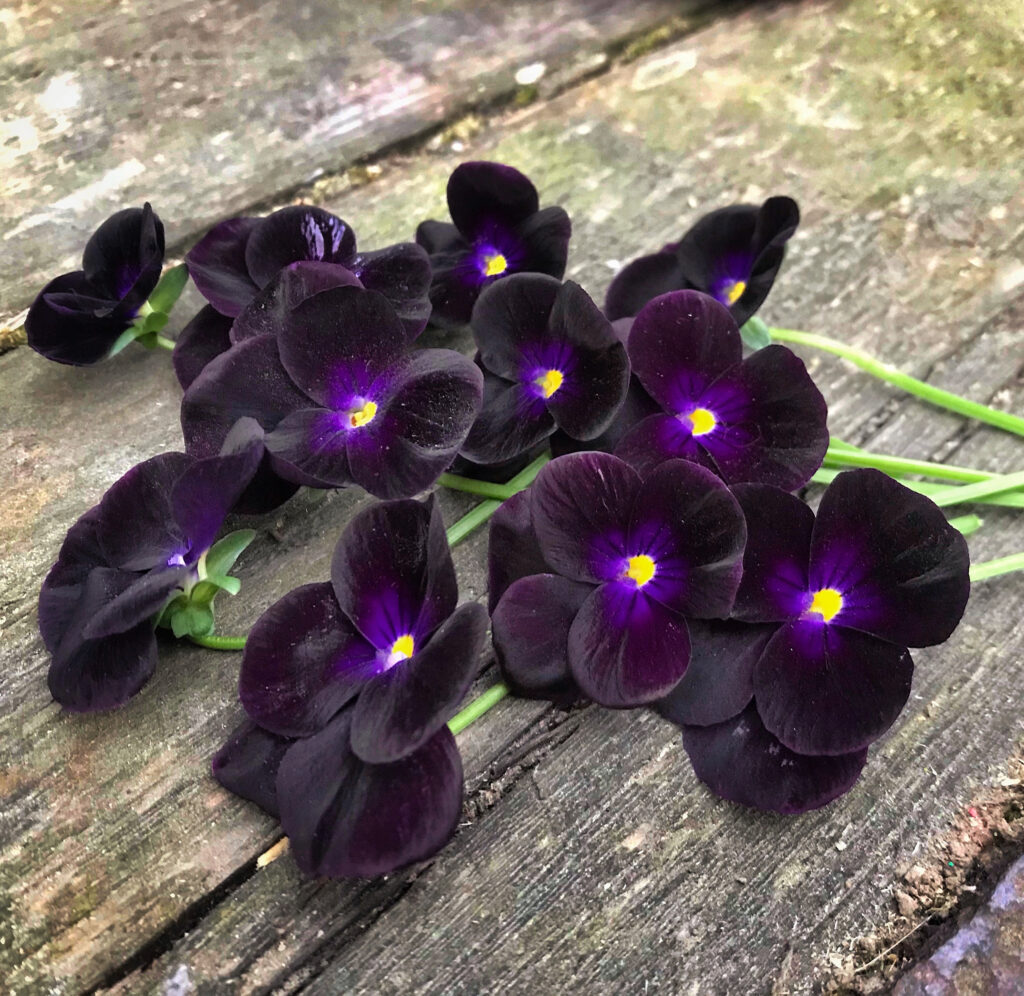
The petals of the pansy black beauty are deep black, fading to bright purple toward the centers, which are neon yellow.
©OlgaKuznetsova7/Shutterstock.com
This flower blooms in springtime and late summer. The petals of the pansy black beauty are deep black, fading to bright purple toward the centers, which are neon yellow. The flowers of this plant grow in clusters. The climate it prefers to grow in is relatively cool, so if you live in a place with warm weather, you’ll need to pay extra attention to this plant.
It’s best to plant it in an area with partial sun and well-drained soil. As for pests, this plant is susceptible to aphids and spider mites. To prevent these pests from harming your flower, check the plant regularly and spray it with insecticide if necessary. Be sure to water the pansy black beauty regularly (about once a week) and fertilize it monthly during the growing season. Pansies are reasonably easy to grow and require very little maintenance. With proper care, this striking flower will thrive!
8. The New York Night Hellebore Flower (Helleborus ‘New York Night’)
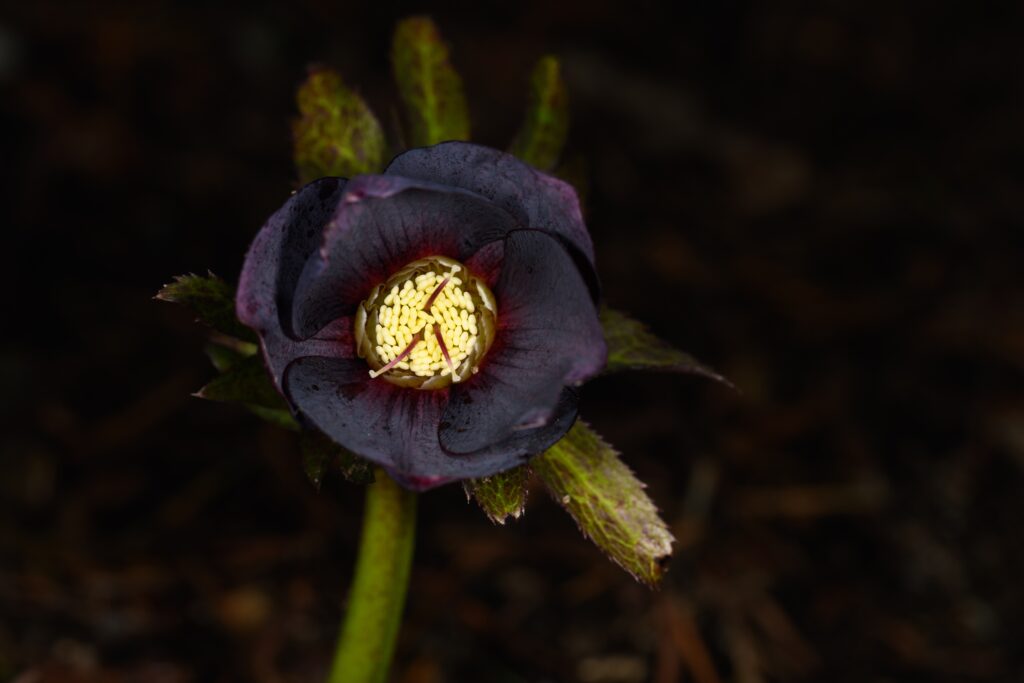
This dark hellebore is called the New York night.
©knelson20/Shutterstock.com
This beautiful flower is native to the eastern United States, and it’s a unique one! The New York night hellebore has large, glossy green leaves and stunning big dark blooms that open in early spring. They prefer to grow in shady areas with moist soil. It is important to note that these flowers are susceptible to various pests, including aphids, caterpillars, mites, and whiteflies. However, there are a few things strategies you can use to protect them.
One of the best ways to keep pests away from your New York night hellebore flowers is by spraying them with insecticidal soap or neem oil solution. This will help kill any existing pests on the flowers and prevent new ones from infesting them. Most importantly, this type of insecticide will not harm the flowers! The New York night hellebores are part of the buttercup family, and they’re also sometimes called Lenten roses because they often bloom around the season of Lent.
9. The Dark Dimension Hyacinth Flowers (Black Hyacinth ‘Dark Dimension’)
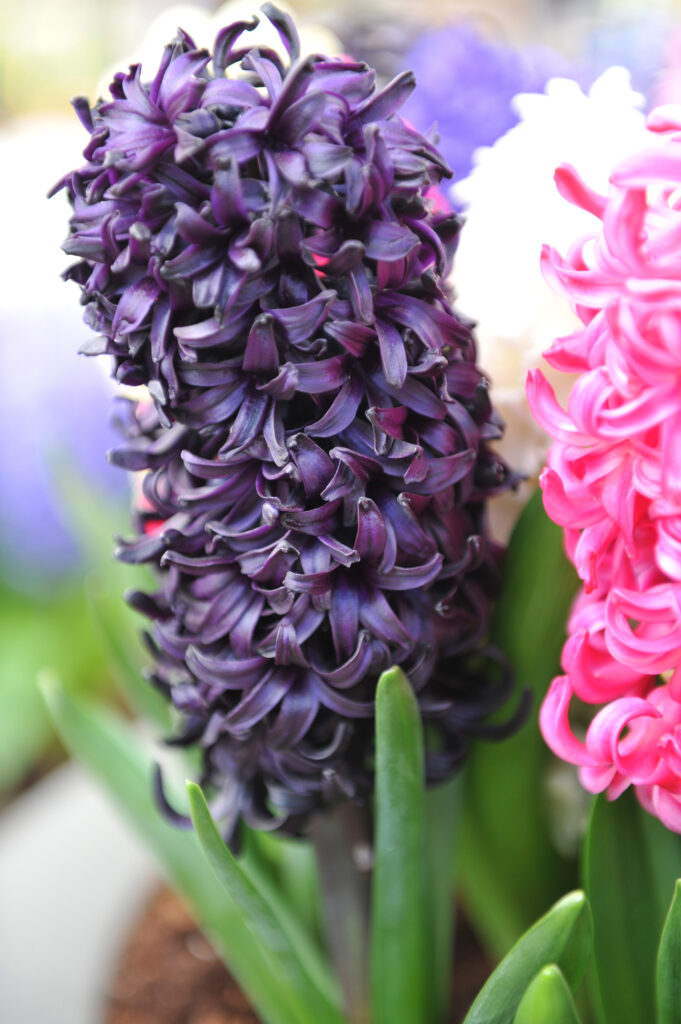
These flowers are unique in appearance, growing in full multi-bloom stalks.
©Sergey V Kalyakin/Shutterstock.com
The dark dimension hyacinth is a deep black-purple flower that grows in warm climates. They need plenty of sunlight and water to thrive and typically bloom in the springtime. These flowers are unique in appearance, growing in full multi-bloom stalks. They have long, slender petals that curl inward at the tips. The center of the flower is a deep black-purple color, while the outer petals are a lighter shade of purple.
Dark dimension hyacinths can make excellent cut flowers. They look beautiful in bouquets and arrangements, have a wonderful scent, and a long shelf life. These are worth considering if you’re looking to add a dark bloom of an uncommon shape.
10. The Columbine Black Barlow Flower (Aquilegia vulgaris)
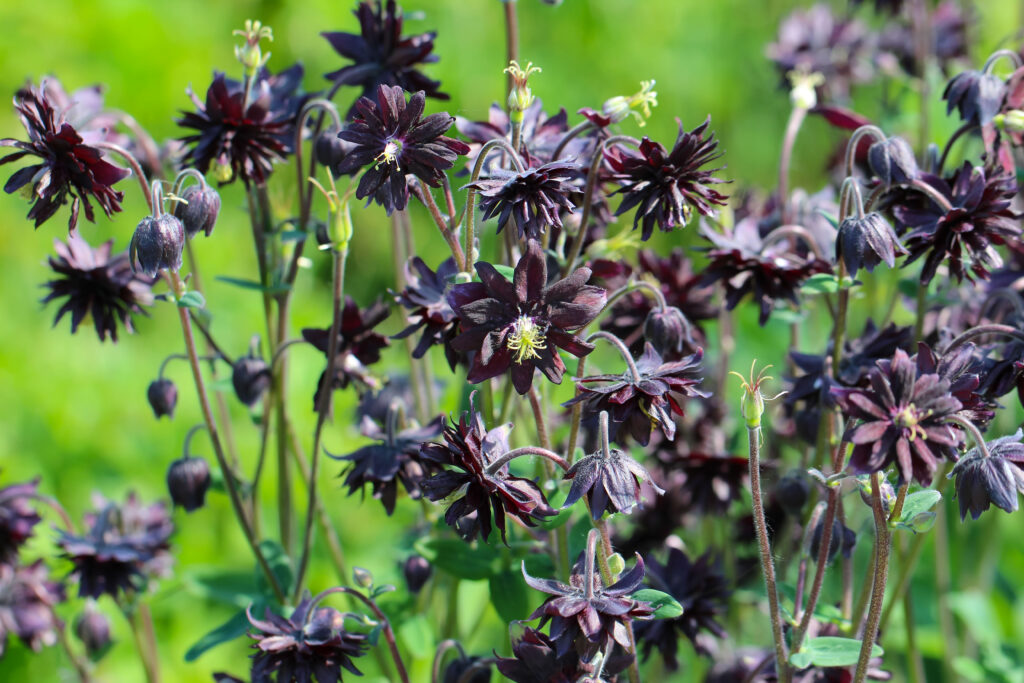
This interesting plant was bred to be a cut flower, making it perfect for those who love to bring a touch of their garden indoors.
©Elena Tratsevskaya/Shutterstock.com
This type of columbine is a beautiful, droopy flower with black petals and yellow centers. They are native to North America and typically bloom in the springtime. This interesting plant was bred to be a cut flower, making it perfect for those who love to bring a touch of their garden indoors.
Columbine black barlow flowers need full sun to partial shade to grow properly. They also prefer moist, well-drained soil. These flowers also need room to spread, so be sure to plant them in an area where they will have plenty of space. If you live in a climate conducive to growing this type of columbine, you can expect them to bloom sometime between April and May.
Thank you for reading! Have some feedback for us? Contact the AZ Animals editorial team.








